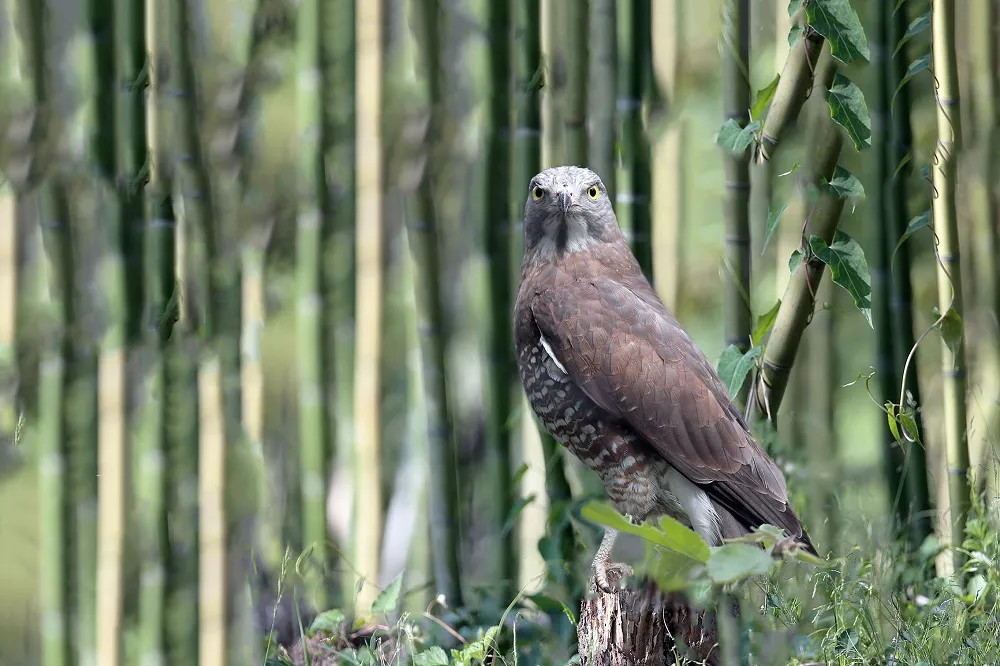The avian world is replete with captivating raptors, and among them, the shikra (Accipiter badius) and the besra (Accipiter virgatus) stand out as fascinating members of the Accipitridae family. These birds of prey exhibit similar physical attributes and hunting behaviors, but upon closer examination, distinct differences emerge. In this article, we delve into the disparities between the shikra and the besra, shedding light on their physical characteristics, geographic distribution, and ecological preferences.
Physical Characteristics:
Size: Shikras are known to be slightly larger in size compared to besras. Adult shikras measure around 28-36 centimeters in length, whereas besras are typically smaller, ranging from 25-30 centimeters.
Plumage: Both shikras and besras display intricate plumage patterns, consisting of dark upperparts and finely barred underparts. However, shikras often exhibit a more pronounced reddish-brown or rufous coloration on their breast and belly, while besras tend to have a darker chestnut or grayish-brown tone.
Tail Shape: An important distinction lies in the shape of their tails. Shikras possess a square-shaped tail, which appears relatively shorter and less rounded compared to the longer and more rounded tail of the besra.
Geographic Distribution:
Shikras: These raptors are widely distributed across a vast range, spanning from sub-Saharan Africa, the Indian subcontinent, and Southeast Asia. Shikras are adaptable and can be found in a variety of habitats, including woodlands, forests, and urban areas.
Besras: Besras have a more restricted distribution, primarily found in Southeast Asia, including countries like India, Nepal, Sri Lanka, Myanmar, and Indonesia. They prefer densely forested regions, particularly deciduous and evergreen forests.
Hunting Behavior and Diet:
Hunting Techniques: Both shikras and besras are known for their agile and stealthy hunting methods. They employ a similar strategy known as “still-hunting,” perching motionlessly on a vantage point and then launching swift attacks on unsuspecting prey.
Prey Selection: Shikras and besras primarily feed on small birds, often targeting species like doves, pigeons, and passerines. However, besras are generally more adept at capturing birds in mid-air due to their longer, rounded tails, which provide enhanced maneuverability during flight.
Habitat Preference: Shikras tend to favor a wider range of habitats, adapting well to urban and suburban environments. Besras, on the other hand, demonstrate a stronger affinity for dense forested areas and are less commonly found in urban settings.
Vocalizations and Calls
Shikras and besras have different vocalizations and calls, which can help birdwatchers identify the species they are observing.
Shikras have a distinctive, high-pitched call that is often described as a “kew-kew-kew” sound. Besras, on the other hand, have a softer, more melodious call, often described as a “ghee-ghee-ghee” or “pee-pee-pee” sound.
Conservation Status:
Both shikras and besras are relatively common and widespread, with populations considered stable. However, habitat loss, deforestation, and illegal trapping for the bird trade pose threats to their long-term survival. Continued conservation efforts and habitat protection are essential to ensure their continued presence in the wild.
Conclusion:
Exploring the contrasting features of the shikra and the besra provides a deeper understanding of the unique traits that set these raptors apart. While they share similarities in their hunting techniques and diet, distinctions in size, plumage, tail shape, and habitat preference offer valuable insights into their ecological roles and adaptability. By appreciating these differences and taking proactive measures to conserve their habitats, we can contribute to the preservation of these captivating avian species for future generations to appreciate and admire.
Related topics:


 Facebook
Facebook  Instagram
Instagram  Youtube
Youtube 